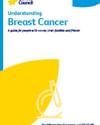National Breast Cancer Screening Program
It’s recommended that all women aged 40 and over, especially those aged 50 to 74 years, have a free breast screen every two years with BreastScreen SA.
Breast screens can detect cancer early, often before you can feel it, and when it is small and easy to treat.
What is a breast screen?
A breast screen, also known as a mammogram, is a low dose x-ray of a breast. A breast screen is currently the best test available to find breast cancer early in people who do not have symptoms.
When should I get a breast screen?
Women aged 40 and over, but especially those aged 50 to 74, are eligible to have a free breast screen every two years with BreastScreen SA.
If you have any signs or symptoms of breast cancer, that are unusual for you – don’t wait for your breast screen, see your doctor as soon as possible.
If you are younger than 40, or over the age of 75, and have a family history of breast cancer or are concerned about your breast cancer risk, speak with your doctor about what is right for you.
How do I book a breast screening test?
If you are aged 40-74, you can book a free breast screen with BreastScreen SA at breastscreen.sa.gov.au/book or call 13 20 50.
If you live regionally, look out for BreastScreen SA’s mobile screening unit when it’s in town. Find out when the mobile screening unit is heading your way here.
Get information about breast screening in your language here.
How to check your breasts or chest
Everyone should look and feel their breasts and chest regularly. It is important to get to know what is normal for you and if you see or feel any changes, see your doctor as soon as possible.
There is no right or wrong way to check your breasts or chest. You may choose to do it in the shower or bath, or while lying in bed. When checking your breasts or chest, make sure to remember to:
- look in the mirror to see if there have been any changes to how your breasts or chest look
- use the flat part of your fingers to feel your breasts or chest
- check all parts of your breasts or chest, including your armpits and up to the collarbone.
If you are still having periods, your breasts can feel different at different times of the month. It may be normal for your breasts to be painful, lumpier or swollen just before your period and softer after your period.
Check your breasts at the end of your period, or if you don’t have periods, choose a regular time of the month – often people choose the first day of every month.
Follow our step-by-step guide to check your breasts.
What breast cancer symptoms should I be aware of?
If you notice any of the following changes in your breasts or chest, see your doctor as soon as possible:
- A lump, lumpiness or thickening of the breast.
- Changes in the skin of the breast, such as puckering, dimpling or a rash.
- Persistent or unusual breast pain.
- A change in the shape or size of the breast.
- Discharge from a nipple, a nipple rash or a change in its shape.
Who is at risk of developing breast cancer?
Everyone, both women and men, are at risk of developing breast cancer. However, it is much more common in women and research shows that people with the following risk factors are more likely to develop breast cancer. If you think you are at an increased risk of breast cancer or have concerns, see your doctor.
Risk factors for breast cancer in females
- Older age – most people with breast cancer are diagnosed over the age of 40.
- Breast density – dense breast tissue as seen on a mammogram.
- Lifestyle factors – being overweight or gaining weight after menopause, drinking alcohol and being sedentary (not physically active).
- Medication – using a menopause hormone therapy that contains both oestrogen and progestogen, taking the pill for a long time (can have a small increase however returns to normal after stopping), taking diethylstilboestrol (DES) during pregnancy, and having radiation therapy to the chest for Hodgkin lymphoma.
- Other medical conditions – having atypical ductal hyperplasia or proliferative disease without atypia, and previous diagnosis of lobular carcinoma or ductal carcinoma.
- Reproductive factors – starting your first period younger than 12, being older than 30 at the birth of first child, not giving birth, not having breastfed and going through menopause after 55.
- Family history – a family history of breast cancer and/or a particular type of ovarian cancer in first degree relatives (e.g. mother or sister) on the same side of the family – especially if diagnosed at a young age.
Risk factors for breast cancer in males
- Older age – most people with breast cancer are diagnosed over the age of 40.
- Other medical conditions – a rare genetic syndrome called Klinefelter syndrome (males with this syndrome have three sex chromosomes, XXY, instead of the usual two, XY).
- Family history – a family history with several first-degree relatives (male or female) who have had BRCA2 breast cancer; a relative diagnosed with breast cancer under the age of 40; or several relatives diagnosed with ovarian, colon or prostate cancer.
Family history of breast cancer
Breast cancer is a common cancer in Australian women, and most people diagnosed with breast cancer don’t have a family history of the disease. Fewer than five per cent of all breast cancers are associated with family history.
However, there are a small number of people who may have inherited a faulty gene that increases their cancer risk.
Everyone inherits a set of genes from each parent, so they have two copies of each gene. Sometimes, there is a fault in one copy of a gene. This fault is called a mutation or pathogenic variant.
The two most common gene mutations linked to breast cancer are the BRCA1 and BRCA2 genes. Other types include CDH1, PTEN, STK11, TP53, PALB2, ATM, and CHEK2.
Women in families with an inherited BRCA1 or BRCA2 change are at increased risk of breast and ovarian cancers. Men in families with an inherited BRCA2 change may be at an increased risk of breast and prostate cancers.
If you are concerned about breast cancer because of your family history, see your doctor to discuss the need for regular breast screening or whether genetic testing would be suitable for you.
For more information about breast cancer risk factors, visit breastcancerriskfactors.gov.au.
How can I reduce my risk of breast cancer?
Research suggests that many cases of breast cancer can be prevented by leading a healthy lifestyle. The most effective ways to reduce your breast cancer risk include:
- maintaining a healthy body weight
- getting 30 minutes of vigorous or 60 minutes of moderate intensity exercise on five or more days per week
- avoiding or limiting alcohol.
For more information about how you can reduce your risk of breast cancer, see your doctor or call Cancer Council SA on 13 11 20.


